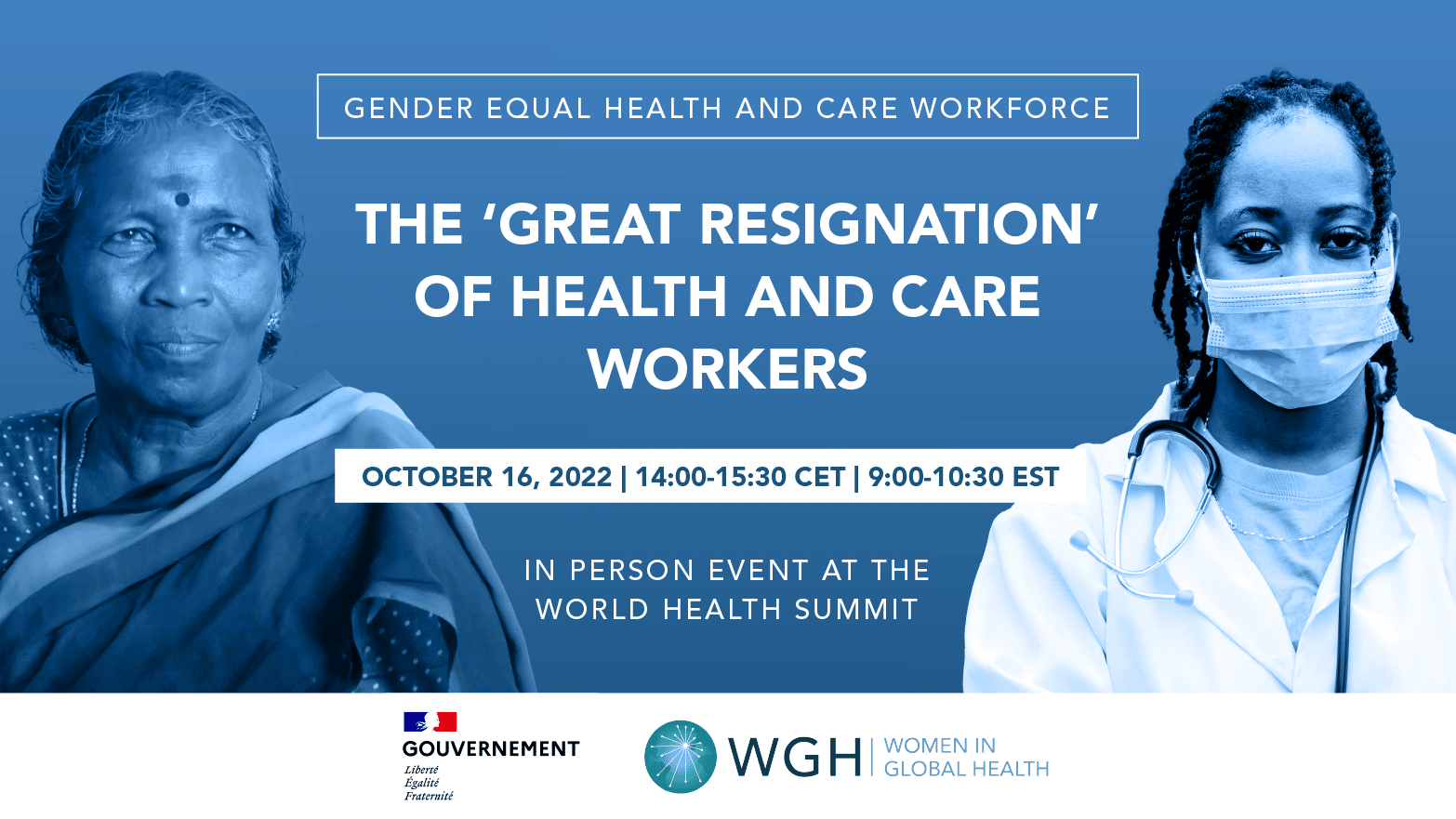
- This event has passed.
The “Great Resignation” of Health and Care Workers
October 16, 2022 @ 12:00 pm - 1:30 pm

The COVID-19 pandemic has exposed inequalities between and within societies, including gender inequality. Women make up around 70% of the health and care workforce globally and 90% of patient-facing roles during COVID-19. Women provide $3 trillion work to health and care annually, of which $1.5 trillion is unpaid. In addition, many women health and care workers face violence and sexual harassment at work, which has increased during the pandemic negative health outcomes from unfitting Personal Protective Equipment (PPE) designed for the male body, and are not able to reach senior leadership roles and thus prevented from influencing decision making.
The world is facing a serious health and care worker shortage, with an estimated 18 million needed globally to ensure Universal Health Coverage (UHC) is reached by the deadline of 2030. Yet the COVID-19 pandemic has not only led to an estimated 80,000 to 180,000 health worker deaths globally, but it has also put a strain on the profession, with some estimates of 1 in 5 health workers leaving their jobs. The burnout experienced by Health and Care Workers (HCWs), due to an immense workload caused by COVID-19 infections, has hit women especially hard. Despite the heroic efforts women have made on the frontlines, for which they have received international recognition and applause, their work continues to be unpaid – especially in the case of community health workers – or underpaid.
Dr. Roopa Dhatt , Women in Global Health (WGH) | Executive Director and Co-Founder | United States of America
Speakers:
- Prof. Dr. Patience Afulani, University of California, San Francisco | Department of Epidemiology & Biostatistics | Assistant Professor | United States of America
- Mara M. Burr, U.S. Department of Health and Human Services | Office of Multilateral Relations | Director | United States of America
- Dr. Lourdes Capito, FIGO – International Federation of Gynecology and Obstetrics | Committee Chair | United Kingdom
- Howard Catton, International Council of Nurses (ICN) | CEO | Switzerland
- Jagan Chapagain, International Federation of Red Cross and Red Crescent Societies (IFRC) | Secretary-General | Switzerland
- Dr. Rana Hajjeh, World Health Organization (WHO) | Regional Office for the Eastern Mediterranean (EMRO) | Programme Management | Director
- Dr. Wilhelmina S. Jallah, Minister of Health | Liberia
- Dr. Matshidiso Moeti, World Health Organization (WHO) | Regional Director for Africa
- Sandra Oyarzo Torres, International Confederation of Midwives (ICM) | Vice President | The Netherlands
- Stéphanie Seydoux, Ministry for Europe and Foreign Affairs | Ambassador for Global Health | France
- Dr. Carla Vizzotti, Minister of Health | Argentina